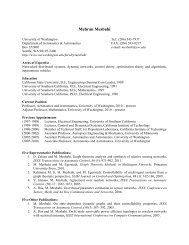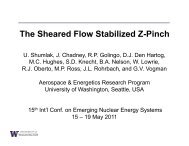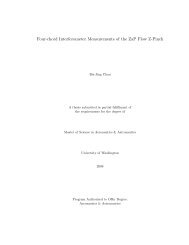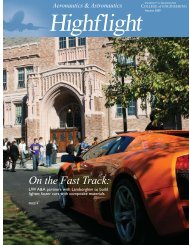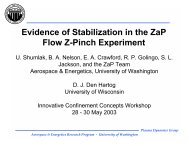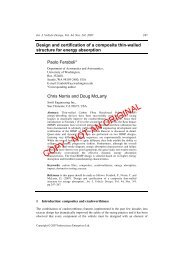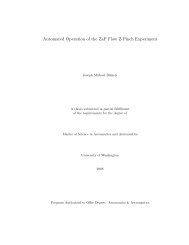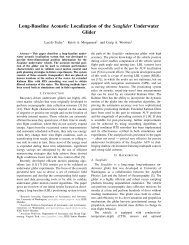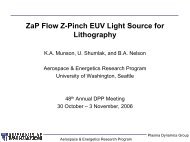Distributed Reactive Collision Avoidance - University of Washington
Distributed Reactive Collision Avoidance - University of Washington
Distributed Reactive Collision Avoidance - University of Washington
You also want an ePaper? Increase the reach of your titles
YUMPU automatically turns print PDFs into web optimized ePapers that Google loves.
12<br />
without sacrificing safety. This framework also allows vehicles to be given different priorities,<br />
such that lower priority vehicles will make way for higher priority ones.<br />
This algorithm requires little (though nonzero) communication between vehicles, and<br />
can safely add new vehicles to the system as they reach sensor range. While the algorithm<br />
is distributed, it is not quite decentralized, in that all-to-all information is needed within a<br />
connected group. The information exchange can be easily implemented through a broadcast,<br />
and if there is enough bandwidth for vehicles to rebroadcast the information they<br />
receive, then a quasi-all-to-all topology can be achieved. The robustness analysis accounts<br />
for the corresponding time delays. Additionally, the algorithm can be run in a completely<br />
decentralized fashion, and while some <strong>of</strong> the guarantees no longer apply, simulations are<br />
given that demonstrate significant capability nonetheless.<br />
No homogeneity is required among the vehicles that make up the system. The DRCA<br />
algorithm allows the vehicles to perform completely different tasks and to have different<br />
size, speed, actuation limitations, and control gains.<br />
The remainder <strong>of</strong> this dissertation is organized as follows. The problem statement is<br />
given in Chapter 2, including the vehicle model. Specific definitions <strong>of</strong> collision and the<br />
collision cone are given in Chapter 3. In Chapter 4 the DRCA algorithm is described, which<br />
forms the bulk <strong>of</strong> the dissertation. A robustness analysis is given in Chapter 5. Finally,<br />
simulation results are presented in Chapter 6 and concluding remarks in Chapter 7.



